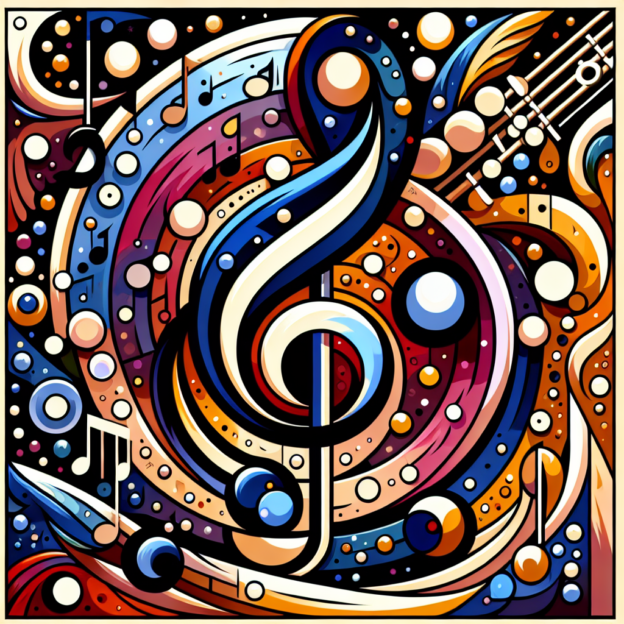The D Bebop Dominant Scale: A Jazz Revolution for Clarinet
Clarinet music has evolved over time, with various scales and techniques gaining popularity. Among these, the D Bebop Dominant Scale stands out for its significant impact. This unique scale blends jazz elements with fundamental clarinet techniques, opening up new avenues for musical expression. By exploring its history, clarinetists can enhance their artistry and gain a deeper appreciation for their instrument's versatility.

Clarinet Fingering Charts are always FREE at MartinFreres.net!
Origins in the Bebop Era
The D Bebop Dominant Scale emerged during the vibrant bebop jazz era of the 1940s. This period was marked by musicians who weren't afraid to experiment and push musical boundaries. The scale is composed of the notes D, A, B, C, E, F, and G, with an additional chromatic note, B flat. This unique combination allows clarinetists to create rich, intricate sounds that deeply connect with listeners.
The Bebop Movement: A New Jazz Frontier
To fully grasp the importance of the D Bebop Dominant Scale, we need to look at the bebop movement as a whole. Unlike the swing era that came before it, bebop was characterized by complex harmonies and rapid tempos. It wasn't designed for dancing but for listening and appreciating musical intricacy.
Jazz legends like Charlie Parker and Dizzy Gillespie were at the forefront of this musical revolution. They developed innovative improvisational styles that heavily relied on unique scales and modes. The D Bebop Dominant Scale became an invaluable tool, enabling musicians to navigate chord progressions and improvise with remarkable creativity.
| Bebop Characteristic | Description |
|---|---|
| Harmony | Complex and intricate |
| Tempo | Fast and energetic |
| Focus | Listening and appreciation |
| Improvisation | Highly creative and spontaneous |
Clarinet's Embrace of Jazz
As jazz gained popularity, clarinetists began incorporating its elements into their repertoire. The D Bebop Dominant Scale quickly became a staple for jazz clarinet players. Renowned musicians like Buddy DeFranco showcased the scale's flexibility, seamlessly integrating it into their improvisations. DeFranco's skill in handling complex chord progressions highlighted how important this scale was in expanding a clarinetist's musical range.
Teaching and Learning the Scale
The D Bebop Dominant Scale plays a crucial role in teaching jazz improvisation to both beginners and seasoned players. It's not just about memorizing notes; understanding how each note relates to chord changes is key to mastering improvisation. Practicing with this scale helps solidify these concepts, making it easier for musicians to express themselves through their instrument.
A Student's Journey with the D Bebop Dominant Scale
For many clarinet students, the D Bebop Dominant Scale presents both challenges and rewards. The social and musical aspects of jazz performance can boost confidence and ignite passion for the instrument. It's during these experiences that aspiring clarinetists often discover their unique musical voice. By including the D Bebop Dominant Scale in their lessons, teachers equip students with the skills needed to excel in jazz.
Exploring Creativity with the Scale
As you become more familiar with the D Bebop Dominant Scale, you'll find it encourages exploration of new arrangements and compositions. The scale's unique character fosters spontaneity and innovation, inspiring players to venture beyond their comfort zones. You might surprise yourself by discovering new sounds and techniques in your practice sessions!
Mastering Performance with the D Bebop Dominant Scale
Whether you're playing in an intimate setting or on a large stage, mastering the D Bebop Dominant Scale can significantly enhance your performance as a clarinetist. It enables fluid, engaging performances that captivate audiences. As you work with this scale, take time to appreciate its historical importance – it represents the evolution of clarinet music from classical roots to the dynamic world of jazz, connecting generations of musicians and their stories.
Conclusion: The Lasting Legacy of the D Bebop Dominant Scale
The D Bebop Dominant Scale is far more than a sequence of notes; it embodies a rich musical heritage filled with passion, innovation, and artistic discovery. As you explore this fascinating scale, draw inspiration from the clarinetists who paved the way, and share your insights with future generations of players eager to embrace this expressive musical tradition.
Table of Contents
- The D Bebop Dominant Scale: A Jazz Revolution for Clarinet
- Origins in the Bebop Era
- The Bebop Movement: A New Jazz Frontier
- Clarinet's Embrace of Jazz
- Teaching and Learning the Scale
- A Student's Journey with the D Bebop Dominant Scale
- Exploring Creativity with the Scale
- Mastering Performance with the D Bebop Dominant Scale
- Conclusion: The Lasting Legacy of the D Bebop Dominant Scale







